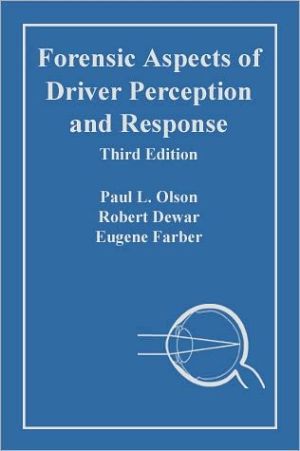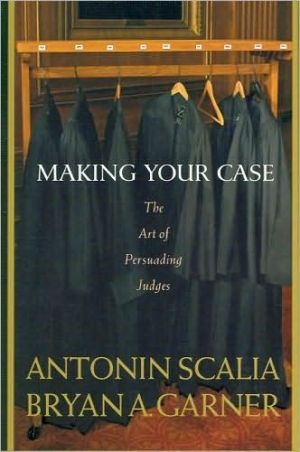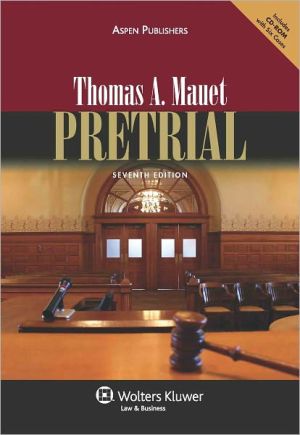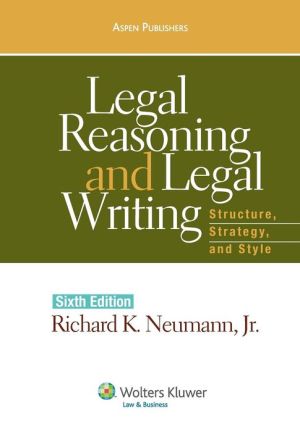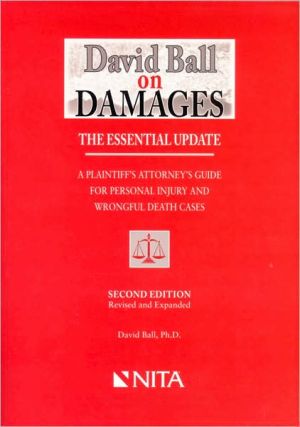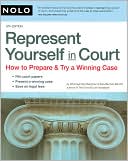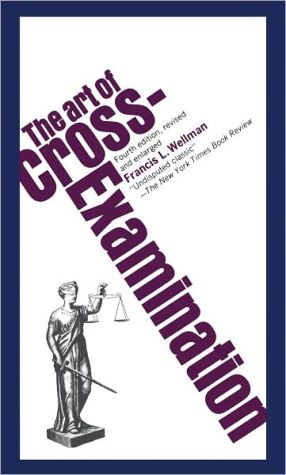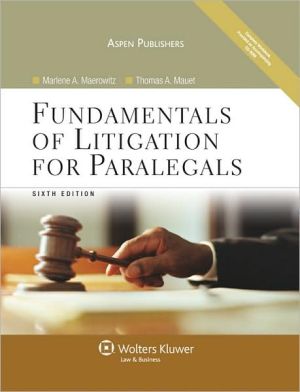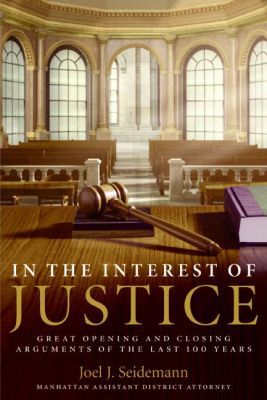Forensic Aspects of Driver Perception and Response
This best-selling reference pulls together the available information on two primary themes: What a driver could have (should have) seen or how long it takes to respond in an emergency situation. The book covers general principles of vision and perception, visibility with motor vehicle headlamps and with streetlighting, night photography, methods of evaluation, basic perception-response situations and complicating factors.\ Many cases come down to questions of what a driver could have or...
Search in google:
This best-selling reference pulls together the available information on two primary themes: What a driver could have (should have) seen or how long it takes to respond in an emergency situation. The book covers general principles of vision and perception, visibility with motor vehicle headlamps and with streetlighting, night photography, methods of evaluation, basic perception-response situations and complicating factors. Many cases come down to questions of what a driver could have or should have seen or how long it would take a driver to respond in an emergency situation. The book is divided into two sections. The first, dealing with perception, consists of several chapters covering the general principles of vision and perception, visibility with motor vehicle head lamps, visibility with street lighting, night photography, and methods of evaluation. The second section, dealing with driver perception response time, consists of two chapters covering basic perception-response situations and those with complicating factors. For more than 30 years, Dr. Olson has authored many reports, publications, and book chapters on Human Factors research he conducted at the University of Michigan Transportation Research Institute and at General Motors Research Laboratories. Since 1993, Dr. Olson has served as a consultant in litigation regarding issues concerning his original research. Science and Justice The great strength of this book is Paul Olsons constant theme that life rarely reflects the test conditions . It will make a useful addition to the library of any accident investigator who wants or needs to go beyond determining speed.
Chapter 1: Introduction1.1 Purpose and Scope 1.2 Human Factors in Accident Reconstruction A. Introduction B. History C. Human Factors in Product Evaluation and Development D. Applicability of Human Factors to Accident Reconstruction 1.3 Human Variability A. The Problem B. Descriptive Statistics C. Correlation D. Inferential Statistics E. The Concept of Threshold 1.4 Expectancy A. What It IsB. Driver Expectancy Chapter 2: Light and Its Measurement2.1 Introduction 2.2 The Nature of Light2.3 DefinitionsA. Light-Reflecting Surfaces 1. Diffuse reflectors 2. Specular reflectors 3. Retroreflectors B. Miscellaneous Visibility-Enhancing Materials 1. Fluorescent materials 2. Luminous materials 2.4 Photometry A. Luminous Intensity and Illuminance B. Luminance C. Means of Measurement Chapter 3: Vision, Audition, Vibration and The Processing of Information3.1 Introduction 3.2 Vision A. Measurement of Visual Performance 1. Acuity 2. Contrast Sensitivity Function 3. Other Measures of Visual Performance 4. Relationship Between Vision Tests and Driving Performance B. Structure and Performance of the Eye 1. Structure 2. The Functioning of the Visual System at Different Levels ofIllumination 3. Implications for Vision Due to the Structure of the Eye C. Glare 1. Disability Glare 2. Discomfort Glare D. The Useful Field of View E. The Twilight Period 3.3 Auditory IssuesA. Problems with soundB. Noise 3.4 Vibration3.5 Information Processing 3.6 Memory Questions Chapter 4: DriverEye Movements and Visual Attention4.1 Introduction A. Terminology B. Methodology 4.2 Driver Eye Movements 4.3 Driver Experience 4.4 Negotiating Curves 4.5 Effects of Drugs and Alcohol 4.6 Effects of Fatigue 4.7 Vehicle Characteristics 4.8 Age and Sex 4.9 Interior Glances 4.10 Effect of In-Vehicle Devices 4.11 Use of Mirrors A. Duration of Routine Mirror Glances B. Duration Of Mirror Glances In Connection With Merges And Lane Changes C. Mirror and Direct Rearward Glances when Changing Lanes and Merging D. The Timing of Rearward Glances with Respect to the Gore 4.12 The Effect of Secondary Glances on Accident Avoidance Chapter 5: Conspicuity5.1 Introduction 5.2 Motorcycle and Bicycle Conspicuity 5.3 The Conspicuity of Emergency Vehicles 5.4 Truck Conspicuity 5.5 Pedestrian and Pavement Delineation Conspicuity Chapter 6: Driver Perception6.1 Introduction 6.2 Perception as Contrasted to Sensation A. Definition B. The Nature of Perception 6.3 Illusions 6.4 Applications 6.5 Difficulties in Perception While Driving A. Problems with the Roadway B. Violations of Expectancy C. Judging Distance to Lights 6.6 The Intruding Vehicle 6.7 Positive Guidance 6.8 Eyewitness Testimony Chapter 7: Judgments of Speed and Distance7.1 Introduction 7.2 Perception of Distance 7.3 Perception of Speed 7.4 Threshold for Closing Speed7.5 Speed Perception and Vehicle Size Chapter 8: The Driver's Field of View8.1 Introduction 8.2 What a Driver Must See 8.3 Field-of-View Targets 8.4 Driver Eye Locations 8.5 Binocular and Ambinocular Vision 8.6 Obstruction of the Forward Field of View 8.7 A-Pillar Obstruction of Intersecting Vehicles 8.8 A-pillar Obstruction of Pedestrians and Bicyclists 8.9 Measuring Pillar Obstructions in the Field A. Measuring the Ambinocular A-pillar Obstruction of a PedestrianB. Measuring the Ambinocular A-pillar Obstruction of an Intersecting Vehicle 8.10 Obstructions to the Side and Rear A. A Note on Convex Mirrors ("Objects in Mirror Are Closer than They Appear") B. Mirrors and Overtaking Vehicles C. Pillar Obstructions to the Side and Rear Direct Fields-of-View 8.11 The Field of view from Large Trucks 8.12 Measuring the Field of View in Large Trucks Chapter 9: The Visibility Provided by Vehicle Lighting Systems9.1 Introduction 9.2 The Importance of Target Contrast A. Definition B. Calculating Contrast 9.3 The Reflectivity of Objects in the Real World 9.4 Driver Vision at Night A. Vehicle Lighting Systems 1. Technology Used in Automotive Lighting 2. Enhanced Vision Systems 3. Characteristics of U.S. Headlamps 4. The intensity-visibility distance relationship 5. Implications B. The Visibility Provided by Automotive Headlamps 9.5 Nighttime Driving Speeds 9.6 When Drivers "Overdrive" Their Headlamps Chapter 10: Factors That Affect Driver Visibility Under Nighttime Driving Conditions10.1 Introduction 10.2 PCDETECT 10.3 The Distance-Squared Law and Visibility Level 10.4 Comparisons A. Target B. Target Location C. Target Size D. Driver Age E. Contrast Sensitivity F. Headlamp Misaim G. Headlamp Intensity H. Glare I. Lamp Mounting Height J. Lateral Separation Chapter 11: Lighting Sources Other Than Vehicle Headlamps11.1 Introduction 11.2 Fixed Lighting Sources A. Mercury B. High-Pressure Sodium C. Metal Halide D. Fluorescent E. Low-Pressure Sodium F. Light-Emitting Diodes (LED) 11.3 The Distribution of Illuminance From Street Lamps 11.4 Loss in Performance of Light Sources 11.5 The Scene When Illuminated by Fixed Sources 11.6 Research on the Performance of Fixed Lighting Systems 11.7 Recommendations for Street Lighting 11.8 Assessment of Visibility in a Field Investigation Chapter 12: Evaluation of Visibility in the Field12.1 Introduction 12.2 Why Do a Field Investigation? 12.3 Preparatory Phase A. Physical Facilities B. Vehicles C. Vehicle Lighting and Marking Equipment 1. Type or manufacturer of lamps 2. Headlamp aim 3. Lamp output 4. Dirt on glass surfaces 5. Headlamp photometry 6. Environmental conditions 7. Lighting conditions 8. Observer age 12.4 Execution Stage 12.5 Analysis and Interpretation Chapter 13: Problems in the Use of Nighttime Photography as Evidence in Litigation13.1 Introduction 13.2 Limitations in the Camera-Film System 13.3 Perceptual-Cognitive Issues A. Field of View B. Static Versus Dynamic Viewing C. Viewing Time D. Adaptation Level E. Image SizeF. Depth Perception G. Glare H. Observer Expectancy 13.4 Implications Chapter 14: Roadway Design and the Driver14.1 Introduction 14.2 Perception of the Road14.3 Visual Search 14.4 Driver Workload 14.5 Sight Distance A. Decision Sight Distance B. Stopping Sight Distance C. Passing Sight Distance D. Intersection Sight Distance E. Additional Sight Distance Factors 14.6 Roadway Design A. Roadway Width B. Intersections C. Roundabouts D. Curves 14.7 Traffic Calming14.8 Road Safety Audits Chapter 15: Work Zones15.1 Introduction 15.2 Driver Information Needs in Work Zones 15.3 Driver Distraction 15.4 Age Differences15.5 Nighttime Conditions 15.6 Visibility of Workers 15.7 Trucks 15.8 Traffic Control in Work Zones Chapter 16: Railroad Grade Crossings16.1 Introduction 16.2 Driver Perception of Railroad Crossing Hazards 16.3 Recognition Errors
\ Science and JusticeThe great strength of this book is Paul Olsons constant theme that life rarely reflects the test conditions . It will make a useful addition to the library of any accident investigator who wants or needs to go beyond determining speed.\ \ \ \ \ The Legal Investigator JournalThis is a well-written, easy-to-understand book a historical account of how humans perceive certain conditions, and their reactions and responses to the same. As investigators, we have learned to depend strictly on the technical aspects of accidents, and the investigation of same, i.e., the road, vehicle, product liability, etc. Olson opens up a whole new aspect on perception and response. It is an excellent book for the serious motor vehicle collision investigator.\ \
